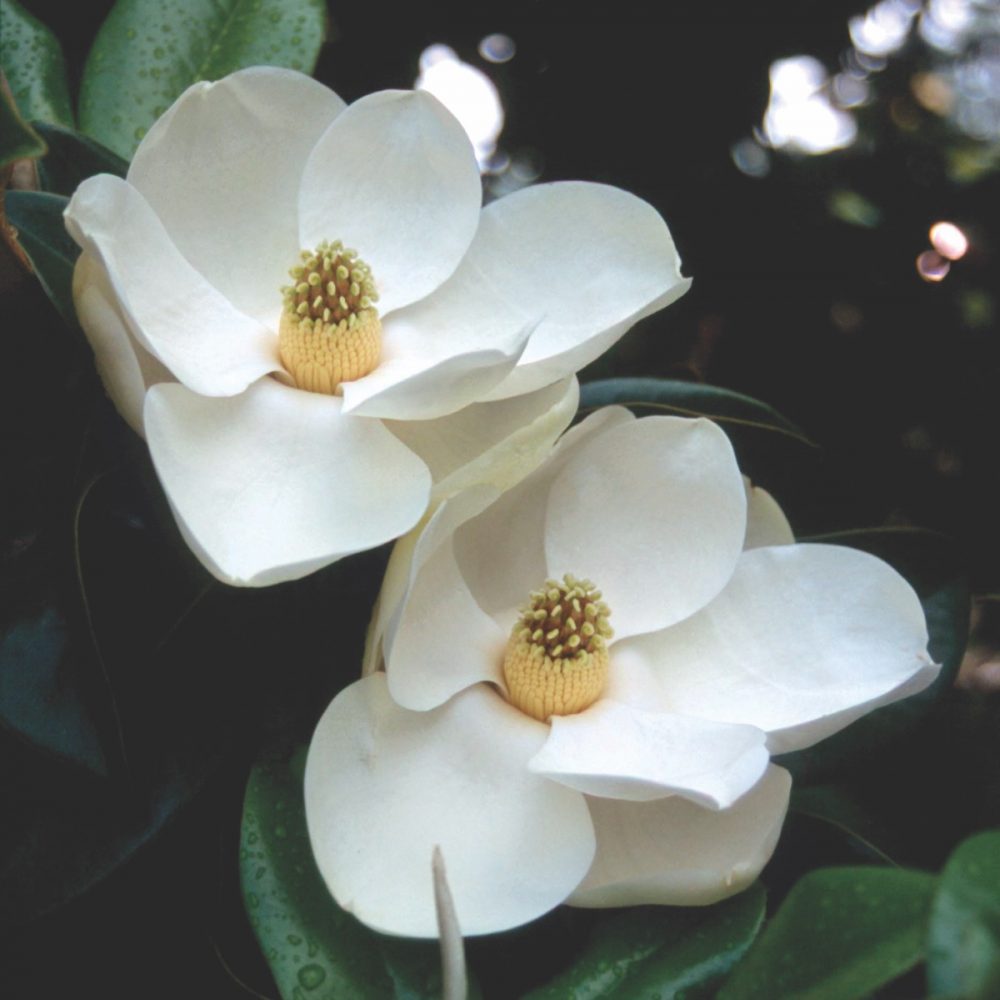
Originally published May 2011. Updated May 17, 2023. When it comes to the garden, I’ve always been a night owl. On long summer nights, there’s no place I’d rather be as temperatures cool, shadows grow long, and everything somehow looks, smells, and even sounds better—fresher—after a long, hectic day. It’s the time to get a second wind for rolling up my sleeves and getting out to weed, water, or whatever—often until darkness forces me to turn on a porch light.
Since most things, it seems, lead back to childhood, I guess my affinity for the night garden stems from fond memories of growing up in a small Southern town, catching lightning bugs and inhaling the sweet scent of a freshly mowed lawn while running barefoot through the dew-dampened grass. Now, as a longtime garden writer–turned–garden marketer, I’m fortunate to be constantly surrounded by a bounty of bold, beautiful color all day long. So when I go home, it’s the subtleties of the night garden that I appreciate, that invigorate me—that make me want to work, entertain, or just hang out there by the light of a candle or lantern.
For years now, the night garden has prompted me to incorporate plants that come into their own after the sun sets, whether it’s in texture, bloom, or fragrance. That often means thinking white, because, as with a shade garden in daytime, it’s the light, pale colors that brighten the night garden.
Plants and White Flowers for the Night Garden

Years ago, a trip through the English countryside sold me on white gardens. One visit to the all white-and-green garden at Sissinghurst Castle, cultivated by writer Vita Sackville-West, had me hooked. Back home, it became a fun—and sometimes challenging—scavenger hunt to scour nurseries for white-blooming annuals and perennials, as well as plants with silver-gray or contrasting green-and-white variegated foliage. These plants are the perfect solution for enjoying the garden at night, when white flowers and textured leaves pop in the shadows of darkness.
Variegated Foliage
- Hosta ‘Patriot’ – Rich green leaves edged with a vibrant, almost glowing white
- Hosta ‘Fire & Ice’ – The opposite of ‘Patriot,’ this hosta has bright white foliage with green-brushed edges.
- Variegated big leaf periwinkle, Vinca major ‘Variegata’ – Shade-loving ground cover with white-edged leaves
- Variegated monkey grass, Liriope muscari ‘Variegata’ – Green and white striped grass-like clumps add texture to plantings.
- Variegated pittosporum, Pittosporum tobira ‘Variegatum’ – Compact evergreen shrub works well as a specimen or in a shrub border or hedge.
- White Album® wintercreeper, Euonymus fortunei ‘Alban’ – A low-growing, evergreen shrub with light, cream borders on green leaves.
White Flowers with Fantastic Textures
- Goat’s beard, Aruncus dioicus – Fern-like dark leaves and feathery white flowers on a bushy perennial that grows up to six-feet tall. Try to buy male plants for showier flowers that work well in arrangements.
- Fothergilla, Fothergilla gardenii
- Oakleaf hydrangea, Hydrangea quercifolia
- Annabelle hydrangea, Hydrangea arborescens ‘Annabelle’
- Japanese snowball, Viburnum x carlcephalum
- White Cloud Muhly grass, Muhlenbergia capillaris ‘White Cloud’
15 Fragrant Night-Blooming Flowers

I also discovered yet another plus to many of these plants: fragrance. Many of them flower only after dark, releasing their perfumes to attract pollinators, such as moths and bats, when the glow of moonlight isn’t enough to lure them into their web otherwise.
Spring-Flowering
- Tea olive, Osmanthus fragrans
- Star jasmine, Trachelospermum jasminoides
- Night-blooming jessamine, Cestrum nocturnum
- Japanese wisteria, Wisteria floribunda
- Southern magnolia, Magnolia grandiflora
Summer-Flowering
- Gardenias, Gardenia jasminoides
- Four-o’-clocks, Mirabilis jalapa
- ‘Casa Blanca’ lilies, Lilium ‘Casa Blanca’
- Flowering tobacco, Nicotiana sylvestris ‘White Shooting Star’or Nicotiana alata ‘Jasmine’
- Night-scented stock, Matthiola longipetala (blooms late spring through fall)
- Evening primrose, Oenothera biennis (blooms early summer through early fall)
Late Summer- and Early Fall-Flowering
- Tuberose, Polianthes tuberosa
- Moonvine, Ipomoea alba
- Angel’s trumpet, Brugmansia
- Moonflower or devil’s trumpet, Datura
In the South, the sweet smell of romance begins in early spring, when tea olive, Confederate jasmine, and night-blooming jessamine unfurl their dainty but powerfully fragrant white blooms. By summer, gardenias, four-o’-clocks, and ‘Casa Blanca’ lilies envelop the garden in a heady perfume. And as most gardens take their last gasp during the dog days of late summer, the bold white blooms of moon vine, angel’s trumpet, and Datura seem to shout, “Hold on, this show’s not over yet!”
By then, it’s time to make plans for putting the garden to bed—only not before taking advantage of yet another benefit of many of these nighttime pals. For years, I’ve collected the seeds of moon vine and cuttings from angel’s trumpets for starting new plants over winter. Who says the sun ever really sets on the garden?
By Danny C. Flanders
